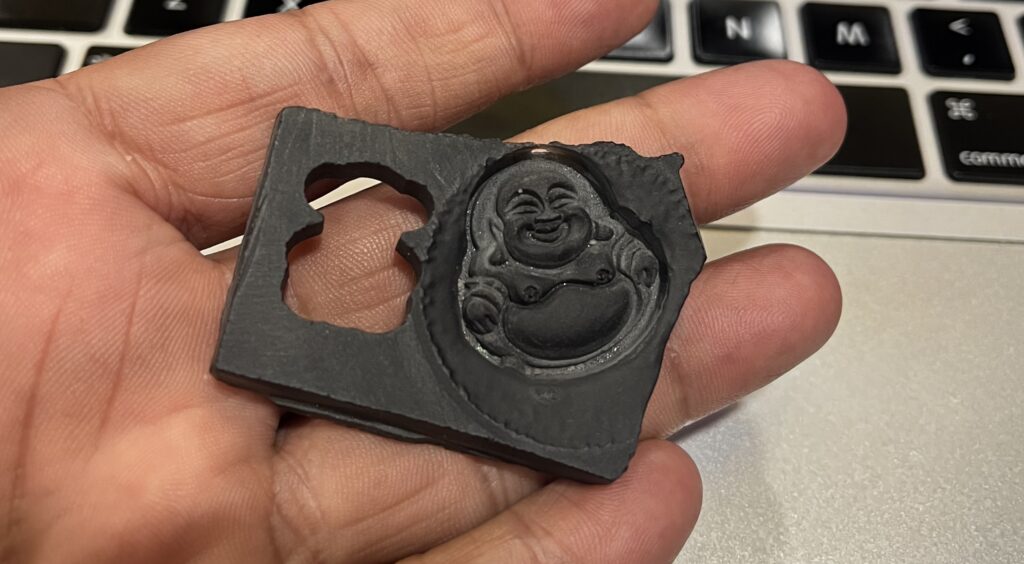Gemstone carving has long been an art form requiring highly skilled craftspeople to hand carve intricate designs. But in recent years, CNC gemstone carving has disrupted this time-honoured technique – bringing both opportunities and challenges for jewelry brands.
As a sourcing agency catering to top designers in the US and Europe, we’ve had a front-row seat to how CNC is transforming gem carving at Indian jewelry factories. The precision, speed, and flexibility of these automated machines allows for phenomenal results simply not possible with manual methods. In this post, we’ll look at the benefits and limitations of CNC gemstone carving, where the technology currently stands, and how jewelry brands can leverage it for incredible one-of-a-kind pieces.
Unparalleled Precision Through Automation
The most obvious advantage of CNC gemstone carving is the accuracy and consistency it delivers. Where a manual carver might slip or make micro imperfections, a CNC machine flawlessly translates the digital design to the gemstone material. It can handle the hardest stones and produce pieces accurate to a fraction of an mm – far exceeding human capability.
This precision permits Indian jewellery manufacturers more ambitious and intricate carvings that were previously not viable. CNC expands the design possibilities – enabling tapered cuts, sharp inside angles, filigree-like details, and complex 3D shapes difficult to consistently achieve by hand. The complexity and uniqueness that high-end jewelry clients value is more attainable.
Faster Iterations and Rapid Prototyping
The automated nature of CNC equipment allows much faster carving than manual methods – some estimate around 5 times quicker. Where a hand carver might spend weeks polishing a custom carving, a CNC machine can complete it in days.
This speed has useful implications for designers looking to rapidly iterate and test ideas when developing new collections. Unique carvings can be turned around faster to evaluate what shapes, cuts, and patterns to pursue across a range of gem materials. It facilitates greater experimentation earlier in the design phase.
The accelerated process also aids companies competing in fast-moving fashion cycles. Special pieces can progress from concept to finished jewelry more quickly to seize sales opportunities. Especially helpful for just-in-time production, CNC supports responding faster to consumer demand.
Lower Labor Costs but Higher Equipment Expenses
A less obvious advantage of automated CNC carving is lower direct labor costs compared to manual gem cutting. As skilled artisans can command higher salaries, scaling production while retaining quality has challenges. CNC provides a consistency difficult for a growing team of carvers to match.
However, this benefit must be weighed against the significant capital costs of acquiring CNC machinery. Top-of-the-line equipment customized for gemstone carving can carry a price tag in the hundreds of thousands. Additional expenses for maintenance, repairs, tooling kits add up over time as well. The break-even point where automation provides real labor savings takes analyzing.
Overall though, the production costs per piece on an ongoing basis tend to be lower with CNC. As equipment costs drop over time, breakeven happens earlier in the investment cycle. The labor cost advantage will likely widen going forward as CNC becomes accessible to more jewelry brands.
Drive Toward Sustainable Production
Another less discussed impact of adopting CNC carving is support for sustainable objectives that appeal to luxury clients. The automated machining process produces very little waste material compared to hand carving methods. Gemstones are expensive, so minimizing unused scraps after cutting provides real cost savings.
CNC equipment can also be programmed for optimal stone utilization given the rough gem’s specific dimensions. Without experienced artistic judgement of how best to orient the stone, manual approaches struggle to consistently achieve high material yields. This waste reduction directly translates to environmental benefits.
For jewelry brands positioning around responsible jewellery sourcing, it’s a powerful narrative to promote the sustainability dividends of CNC production. It signals to increasingly conscientious consumers that the uniqueness of their purchase did not come at the expense of damaging mining practices. This brand messaging resonates especially well with high-end clientele.
The Next Frontier: Jewelry-Specific Machines
While standard CNC milling machines can capably handle gemstone carving, the next evolution is solutions purpose-built for jewelry design. As the market demand grows and technology advances, we are now seeing specialized CNC equipment fine-tuned for tiny, intricate carvings and limited production runs.
As adoption spreads, we expect continual improvement driving faster and more accurate jewelry CNC machines. They will become compact enough for in-house use by designers to enable rapid prototyping right next to the creative process. The tools will get simpler and more accessible for small producers. And innovation in software and digital design integration will empower more customization and personalization.
This next wave of disruption has only begun. Jewelry brands that embraced CNC early have competitive advantages. As sourcing experts, we are ready to guide clients on how to strategically incorporate this cutting-edge technology for standout collections. The creative possibilities are dazzling.
Striking the Ideal Balance
In the right application, CNC gemstone carving delivers advantages traditional methods struggle to match. The precision, speed, and sustainability dividends make it a compelling production method jewelry brands need to evaluate. To determine if it aligns strategically with your business, focusing on a few key questions is helpful:
– What degree of serial production is needed to justify the capital expenditure? Depending on current and projected volumes, the payback timeframe will vary. Plot out realistic adoption scenarios – a phased roadmap for integrating automation may provide the best return.
– How critical is rapid iteration in the design process? The faster turnaround CNC allows supports more experimentation upfront to solidify collections faster. If responsiveness is key to your client value proposition, it’s a solid rationale for adopting.
– Are supply chain ethics a pillar of your brand standards? Increasingly conscious consumers respond well to messaging about responsible and sustainable production methods. CNC gem carving supports important environmental goals that help differentiate luxury products.
Our verdict on CNC
Revolutionary but not an overnight blanket solution. The ideal balance lies in blending automation with artistry. Hand carving still produces stunning one-of-a-kind statement pieces – machines cannot fully replicate generations of craft mastery. But for speed, precision, and complexity, CNC gemstone carving opens new frontiers of design.
At Artisanat Overseas, we specialize in sourcing ethical gemstones and sustainable jewelry from India. We’ve seen first-hand how CNC (computer numerical control) technology is revolutionizing traditional gemstone carving crafts in India. Skilled artisans are embracing CNC machines to create stunning personalized jewelry like carved cameo gemstone pendants. The CNC precision allows for incredibly intricate Intaglio art to be carved on gemstones with detail impossible by hand alone. The CNC process also opens up new possibilities with hard stones like onyx and quartz for carved cameos and detailed gemstone intaglios. Indian artisans merge their traditional hand craftsmanship with cutting-edge CAD software and CNC carving tools. We believe these machines allow Indian jewelers to make heirloom-quality, personalized jewelry more accessible while preserving ancient carving traditions.

